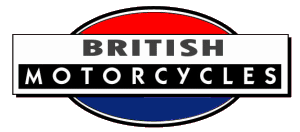

The company was run by Monty Beaumont and his brothers.
There was a disagreement between Charles Redrup and Beaumont who had failed to make royalty payments on the Redrup patents employed.
Source: Graces Guide

The lightweight 2¾ h.p. Beaumont is chain-driven. Observe the girder type spring forks.

The simple two-stroke Beaumont two-speed mount. A Wall engine is fitted in this case.
Beaumont. (Stand 163.)
2¾ h.p. Blackburne; 71x88 mm. (348 CO.); single-cylinder four-stroke; side-by-side valves; drip feed lubrication; B. and B. carburetter; Runbaken chain-driven magneto; two-speed Sturmey-Archer gear; chain drive; Kempshall 26x2¼ in. tyres. Price £99 10s.
Beaumont Motors (Leeds), Ltd., Cleopatra Works, Harehills, Leeds.
There is a clean neatness about this all-chain drive lightweight that is very commendable. Detail, both in design and finish, is of a high standard, and, although the power-unit and gear box are proprietary units, the machine is in many ways distinctive. Both the handle-bar and pedal brakes actuate bands respectively internally expanding and externally contracting on a drum on the rear hub. The foot brake rod is of the (literally) straight pull type; and the pedal portion is long enough to afford great leverage. Arden spring forks and a wide flat tank, shallowing to the rear, are two noticeable features; while the width and more especially the extent around the circumference of the wheel of both front and rear mudguards are unusually great.
2¾ h.p. Wall; 70x70 mm. (269 c.c.); single-cylinder two-stroke; Amac carburetter; direct-driven magneto; two-speed Roc gear; chain and belt drive; Kempshall 26x2¼ in. tyres. Price £68 5s.
This model has been produced on simpler and cheaper lines, but at the same time it compares very favourably with any other exhibit of its type. In appearance rather similar to the other model, it lacks that touch of "luxury" that lies in the specification of its stable companion. No clutch or kick-starter is fitted, the final drive being by belt from a Roc two-speed gear box.
The Motor Cycle, December 2nd, 1920. Page 722